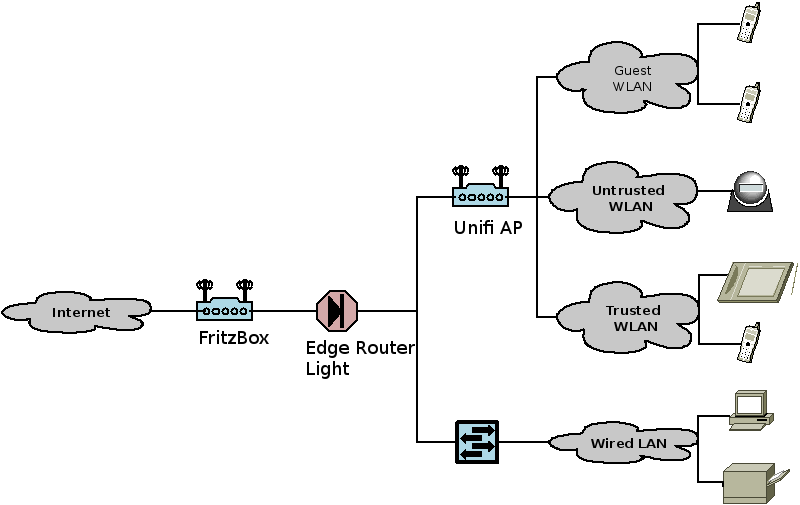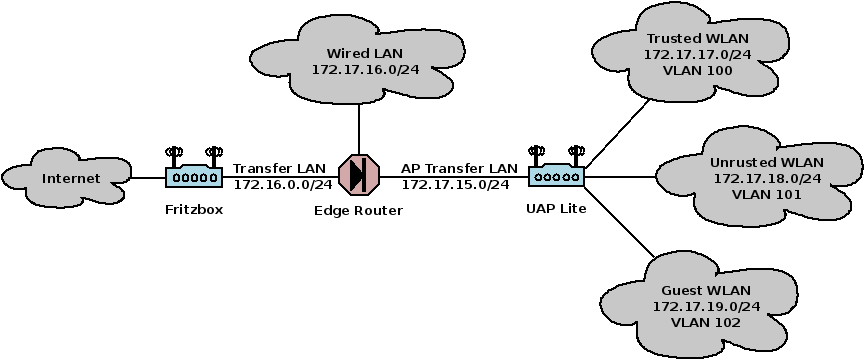
| Inittial release: | 20180902 |
| Last updated: | 20180906 |
My ISP provided me with a 'FritzBox' from AVM. This device is serviceable for most users, I guess, but too limited for me. Additionally I don't let anyone prescribe how my home network should look like.
So I decided to enhance my network a little bit:

First I introduced a dedicated firewall, using an "Edge Router Lite" from Ubiquiti Networks. This device is a so called "exposed host" (in AVM language). The FritzBox no longer secures my network, everything is managed on the edge router.
The second step was to introduce a convinient access point for my wireless LAN deployment, servicing three different WLANs:
The heart of my network is the wired part. Here you find my desktop computer, my printer and many other (more or less) interresting things.
Now that my network layout is (physically) finished, the next step is to make up my mind about the logical layout. In other words: I need an IP address plan which describes what IP addresses will be used:

So every LAN segment will use its own /24 IPv4 network. Two additional transfer networks are introduced to connect the routers and the access point.
The wireless LANs are addtionally seperated by VLANs so they live in their own layer 2 broascast domain. These VLANs are looped through to the Edge Router so are virtually directly connected to it.
Because the IPv6 networks are dynamically assigned, I can not statically build networks with them. And since there are still applications which are not IPv6 aware and for internal, i.e. LAN to LAN, communication IPv6 is not really needed I completly disregard IPv6 at this point. Internal communication is based purly on IPv4. IPv6 is only used for internet directed communications. (More on this later)
Now that we have a plan we can lay our hands on the devices, starting with configuring the Fritzbox.
<<< Prev Next>>>